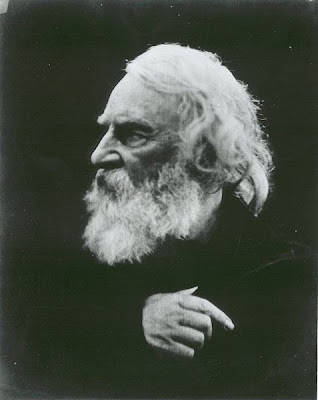Take it from these famous people
Organized and compiled by Dr Abe V Rotor
Living with Nature School on Blog
Living with Nature School on Blog
%2BDarwin%2Be.jpg)
1. Charles Darwin published his masterpiece in his old age, more than 20 years since he started his research. He was a late bloomer, did not pursue medicine but became a naturalist.
Darwin
2. Benjamin Franklin was past 80 when he helped draft the constitution.
3. Chief Justice Oliver Wendell Holmes was in his 80's when he wrote some of his classic legal opinions and he served well into his 90's.
4. Artist Pablo Picasso as well as cellist Pablo Casals were active into their 90's.
5. Moses led his people from Egypt, and lived to a very ripe age. He became suddenly mature and old when he brought the 10 commandments from Sinai. Grandma Moses began her art career in her late 70's.
6. Victor Fankl, after second world war, and released from the Nazi camp, founded logotherapy, and a book A Search for Meaning. in his old age.
Frankl
7. Greek shipping magnate Onassis was already very old when he married the widowed Jacqueline Kennedy
8. Michelangelo designed St. Peter's Cupola when he was 83 and remained active until he was 89.
 9. Tandang Sora is called with such respect because of her age coupled by high quality of leadership – trust and confidence.
9. Tandang Sora is called with such respect because of her age coupled by high quality of leadership – trust and confidence.10. Sister Mamerta Rocero SPC went back to school for her PhD in her sixties, became one of the few Filipino ethno botanists, died at the age 94.
11. Dr Fe del Mundo, past her 90s continued to inspire doctors and those in the health profession.
12. Dr. Dioscorro Umali until his death at the age of 73, was IRRI’s visiting scientist to China; he held the highest position as regional director of UN-FAO.
13. I am fortunate to have studied under these famous professors in their old age. It is indeed a rare honor and privilege.
• Dr. Deogracias Villadolid Stanford Fishery expert, introduced tilapia.
• Dr. Nemesio Mendiola, Luther Burbank of the Philippines
• Dr. Gerardo Ocfemia, formost plant pathologist
• Dr. Velasquez, formost Filipino phycologist
• Dr. Eduardo Quisumbing, author of the most popular book on medicinal plants.
• Prof. Leopoldo Karganilla, entomologist
• Prof. Emiliano Roldan, plant pathologist
• Dr. Juan Aquino, soil scientist
• Dr. Eugenio Cruz, agricultural engineer, invented the evaporator air-con.
• Dr Rufino Gapuz, animal husbandry expert
• Dr. Francisco Fronda, father of the poultry industry of Thailand.
• Prof. Domingo Paguirigan, horticulturist
. Dr Salvador Araneta, President of Araneta University
Prof. Jose Lansang Journalist, Lyceum of the Philippines
Dean Juan Torres, agriculturist, Araneta University
. Dean Jose Adeva, Lyceum of the Philippines
Dr. Ernesto Franco, Management, Lyceum of the Philippines

Prof. Amando Doronilla, journalist, Lyceum
of the Philippines
. Prof Francisco Claridad, plant geneticist
14. Marlon Brando came back to the screen when he was in his seventies appeared as The Godfather and won a second academy award.
15. Spencer Tracy was the old man of Ernest Hemingway's The Old Man and the Sea.
16. Anthony Quinn was Zorba the Greek and appeared as the old man in Harry Potter series.
17. Oliver Cromwell retired on the farm, then fought for the rights of England in his old age, deposed the king – but restored the monarchy after.
18. Charles Dickens wrote A Christmas Carol, Oliver Twist, and looked at his old characters as himself. – Fagin and Ebenezer Scrooge.
19. Henry Wadsworth Longfellow became the most respected professor in Cambridge in his old age – yet experimented on new style of poetry. Translated Dante’s Divine Comedy , Song of Hiawatha (Finnish meter), Evangeline (hexameter only for Latin and Greek Iliad) died at 75, very old in his day’s standard.
Longfellow
21. Handel wrote Alleluia when he was already very old.
22. Wise Kings – King Solomon, King David; the Three Kings, pictured as old men in promotion of Christianity among old people, and the rich and powerful – but they were not made saints.
23. Confucius and other ancient Chinese philosophers are pictured as old men - dignified, wise and humble.
24. Ronald Reagan was the oldest US president when he was elected, and became one of the best contemporary presidents of America.
15. Goethe, philosopher; Matisse, modern painter; Keats, poet; Mao Tse-tung, Chinese communist leader - these, and thousands of old people of their kind, make our world a wholesome and promising one. ~
16. Severino Reyes, aka Lola Basyang, wrote his first story for children - Plautin ni Periking - at age 75. He lived long to be able to finish more than 400 stories for children, which were adopted in Komiks, movies, stage plays, books and magazines.
Severino Reyes aka Lola Basyang
Lesson on former Paaralang Bayan sa Himpapawid with Ms Melly C Tenorio
738 DZRB AM Band, 8-9 evening class, Monday to Friday
738 DZRB AM Band, 8-9 evening class, Monday to Friday






















































